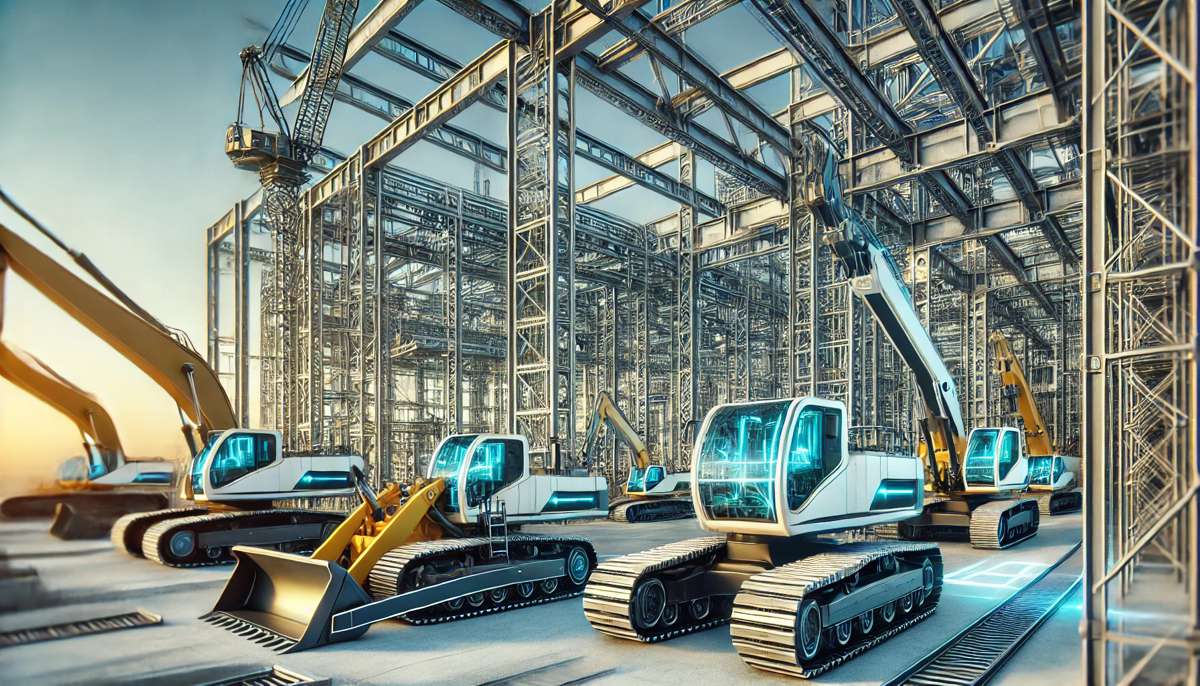The Construction Industry is Driving Towards Climate Neutrality
As the construction industry faces growing pressure to reduce its carbon footprint, the path to climate neutrality has become a central issue for many in the sector. From alternative energy sources to streamlined construction processes, the global effort to cut emissions is gaining momentum, with Europe leading the charge.
The bauma 2025 trade fair promises to showcase these advancements, providing a pivotal platform for discussing innovations in machinery, building materials, and industry standards. Scheduled for April 7 to 13, 2025, in Munich, this event will draw attention to solutions that could redefine how the construction industry operates in the pursuit of environmental sustainability.
Why Climate Neutrality Matters for Construction
The European Union’s ambitious target to be climate-neutral by 2050 has shaken up industries across the continent, but construction has a particularly steep hill to climb. Responsible for around 36% of the EU’s carbon emissions, the construction value chain—from material production to building operations—has long been a significant contributor to greenhouse gases. However, reaching climate neutrality isn’t just about reducing emissions during the use phase of a building; it’s also about focusing on decarbonisation during construction.
In a bid to meet these objectives, many within the sector are re-evaluating traditional processes and investing in greener technologies. The potential is huge, and not just for cutting emissions; it’s also an opportunity to increase efficiency and reduce costs in the long run. But how can these goals realistically be achieved? The answer lies in technological advancements and a fundamental shift in how construction projects are planned, managed, and executed.
Optimising Processes for Maximum Efficiency
One key to a climate-neutral future lies in optimising construction processes. Machine efficiency has come a long way, thanks to years of advancements in component technology. Joachim Schmid, Managing Director in the Construction Machinery and Building Material Plants division of the German Mechanical Engineering Industry Association (VDMA), notes: “As the international construction machinery industry has already been vigorously driving forward this development for decades, for example, through increasingly economical components, much has already been achieved in this regard.”
Still, Schmid believes there’s room for more improvement—especially when it comes to process optimisation. Fine-tuning how machinery is used on-site can significantly reduce carbon output, saving time, resources, and energy. Whether it’s reducing idle times or improving machine scheduling, there’s a growing emphasis on ensuring machinery is running as efficiently as possible at every stage of construction.
The Power of Digitalisation and Automation
Digitalisation and automation are emerging as game changers for the construction industry. At bauma 2025, many of these solutions will be on full display, with experts highlighting how digital planning tools can eliminate inefficiencies. By enabling machine-to-machine communication, construction companies can streamline their production chains, making sure no machine is left idle longer than necessary.
Furthermore, smart sensors that track machine status in real-time can help operators catch potential issues, such as increased energy consumption, before they become major problems. This not only helps reduce operational costs but also minimises carbon emissions by ensuring machines run at peak efficiency.
But digitalisation isn’t just about optimising equipment. Automation is already proving to be an effective way to reduce human error, speed up construction timelines, and limit energy waste. Whether through fully autonomous machinery or partial automation, these systems are increasingly being used to make construction sites safer, smarter, and more environmentally friendly.
Alternative Energy Sources
Of course, improving efficiency is just one piece of the puzzle. If construction is to become truly climate-neutral, the industry must move away from fossil fuels and toward alternative energy sources. This is another area where bauma 2025 will shine a spotlight, with a special focus on alternative drive concepts.
Electric motors are already being used more widely, but there’s growing interest in hydrogen-powered construction machinery as a potential solution to long-term sustainability. Hydrogen, when produced from renewable sources, offers a clean energy alternative that could power heavy-duty construction equipment without the high emissions associated with traditional fuels. Another option that’s gaining traction is hydrogenated vegetable oil (HVO), which can be used as a drop-in fuel to lower emissions from existing diesel engines.
“There is also significant potential for reducing CO2 in machine operation,” Schmid points out. Training operators to use machines more efficiently, combined with digital assistance systems, can make a world of difference. And as companies continue to invest in research and development, hydrogen and electric-powered machinery are likely to become even more viable alternatives in the near future.
The Role of Policy and Collaboration
Technological advancements alone won’t drive the construction industry to climate neutrality—policy changes are just as important. To facilitate the transition to greener building practices, governments must play an active role, setting up the necessary legal frameworks, cutting bureaucratic red tape, and offering financial incentives for companies willing to innovate.
Nicole Schmitt, bauma Exhibition Director, believes that collaboration between manufacturers, users, and policymakers is essential. “Bauma is the ideal platform in that regard for everyone involved to exchange ideas,” she says. With the right policies in place, the construction industry can move forward confidently, knowing it has the support it needs to make climate-neutral construction the new standard.
Driving Change for a Sustainable Future
The road to climate neutrality in construction is long, but it’s far from impossible. Bauma 2025 will provide a unique opportunity for the global construction community to come together, share ideas, and explore new technologies that could reshape the industry for the better. With process optimisation, digitalisation, automation, and alternative energy sources leading the way, the future of construction is looking greener than ever.
Through collaboration, innovation, and forward-thinking policy, the construction sector can play a pivotal role in the global fight against climate change. The next decade will be critical, and bauma 2025 could be the moment that sparks the change.




















